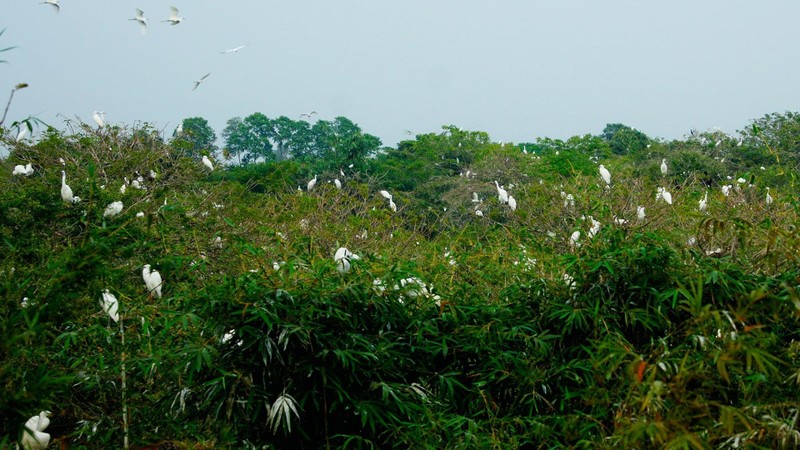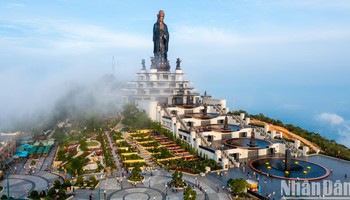Located in Thoi Thuan Hamlet, Thuan An Ward, in the suburban district of Thot Not in Can Tho City, Bang Lang Stork Garden currently covers an area of over 16.5 hectares. The owner of the stork garden is Nguyen Ngoc Thuyen, known as Bay Thuyen or Bay Co.
Realizing the important role of this stork garden to nature as well as tourism, Can Tho City re-planned Bang Lang Stork Garden, elevating it to an eco-tourism area, and in April 1997 starting bird watching trips in the garden.
As the largest bird sanctuary in the southwestern region, Bang Lang Stork Garden is populated by 200,000 storks of 20 species. White storks and blue storks make up the largest numbers while the smallest bird is the red stork. Some rare birds also live in this garden, such as pelicans and herons.
The Bang Lang Storks Garden is most crowded with the birds during their reproductive season from August to January of the lunar calendar. In particular, the Chinese pond heron nests and lays eggs from February to April.
The most stunning scenes can be observed at 6am when the birds leave home for food and again at 5pm when they return. Flocks of birds swivelling on the wind cover the red sky at dusk and dawn.
Bang Lang Stork Garden is located in Thoi Thuan Hamlet, a village with a typical idyllic beauty of the villages in the Mekong Delta.
From the centre of Ninh Kieu Wharf in Can Tho City, tourists will have to travel along Highway 91 in the direction to Long Xuyen (An Giang), through the territory of the districts of O Mon and Thot Not until they see a bridge named Bang Lang. There will be signs to enter the bird sanctuary. This journey is quite long with a distance of around 52kilometres.
The path to Bang Lang crosses through vast rice fields under the shade of green bamboo trees, creating a relaxing and peaceful space.
A small corner of the residence of tens of thousands of storks. Bang Lang Stork Garden is today as the effort and enthusiasm for decades of the owner Bay Thuyen and his family, who grew more trees, improving the environment to fit the birds’ needs until the land has become the permanent home of around 200,000 storks.
In the middle of the garden, in addition to the observatory, the owner Bay Thuyen has also constructed bamboo and wooden huts for visitors to visit and learn about the storks. Over the decades, Bay Thuyen has expended great efforts as well as his own money to preserve the storks, through which he has gained a deep understanding of the storks’ feeding, reproduction, and other habits.



























